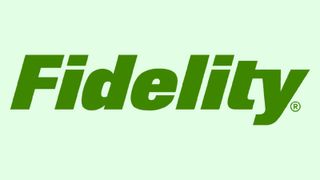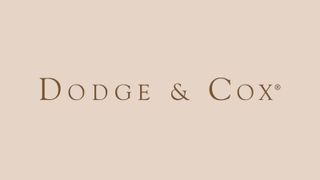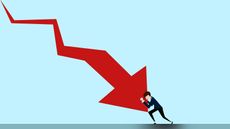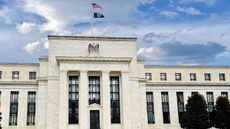Best Bond Funds to Buy
The best bond funds provide investors with income and stability – and are worthy additions to any well-balanced portfolios.


Investors looking for stability often turn to the fixed-income market, seeking out the best bond funds and bond ETFs to buy. This is because these debt securities are often much less volatile than stocks.
In fact, bankruptcy laws generally state that if a company fails, it is the bondholders that must be made whole first – whereas the failure of a publicly traded company could leave investors with shares that are totally worthless.
Of course, the tradeoff is that it's almost impossible to imagine bonds delivering a quick 10% or 20% in principal gains, while the stock market has had many windows of time where it's been able to pull down those kinds of profits. That stability cuts both ways.

Sign up for Kiplinger’s Free E-Newsletters
Profit and prosper with the best of expert advice on investing, taxes, retirement, personal finance and more - straight to your e-mail.
Profit and prosper with the best of expert advice - straight to your e-mail.
Are bonds good retirement investments?
If you're at or near retirement and your biggest concerns are capital preservation and income, you simply cannot overlook bonds.
At a minimum, investors should consider modest exposure to fixed-income markets to add diversification to their holdings – and if your nest egg is large enough, bond funds may even make sense as your core asset as a way to protect your hard-earned money.
Are bonds a good investment this year?
Following a rough 2022 where bonds had one of their worst years on record, 2023 fared just slightly better. And Darrell Cronk, chief investment officer for Wealth and Investment Management at Wells Fargo Investment Institute, expects the volatility to continue this year.
"In our view, the year will be the tale of two halves: a decline in yields during the first half of 2024 as the economic slowdown deepens, followed by a climb in yields in the second half as the recovery begins to take shape," Cronk writes in WFII's 2024 Market Outlook, adding that there is an opportunity for bonds to produce positive returns in the first half of the year.
"We believe that maintaining exposure in short- and long-term high-quality fixed income may provide an advantage before potentially moving into lower credit exposure in the second half of the year," he adds.
How to find the best bond funds
To put together our list of the best bond funds, we looked for mutual funds that are well-established with at least $1 billion in assets. Additionally, we homed in on those that are accessible to the majority of investors with minimum investment thresholds of $3,000 or less.
You always should always do your own research, but these are some of the best bond funds to buy now. These funds span several different strategies to help investors find the right product for their risk tolerance and financial goals.
Data is as of February 9. SEC yields reflect the interest earned after deducting fund expenses for the most recent 30-day period and are a standard measure for bond and preferred-stock funds.
Fidelity U.S. Bond Index Fund

- Assets under management: $58.2 billion
- SEC yield: 4.3%
- Expense ratio: 0.025%, or $2.50 annually for every $10,000 invested
Founded back in 1990, the Fidelity U.S. Bond Index Fund (FXNAX, $10.26) offers an affordable way for investors to play the bond market. In addition to its attractive fee structure, it boasts an impressive $58 billion in assets under management to claim a spot as one of the largest bond funds out there.
The mix is here has about 41% in government bonds and 26% in securitized bonds. The duration is at about 6.1 years.
The general strategy for FXNAX is to invest in domestic and investment-grade bonds. This means only the highest-quality issuers, including the U.S. Treasury Department, federal mortgage agency Fannie Mae and top financial firms like Citigroup (C).
With no investment minimum, this fund could be a decent alternative to some of the other funds here for investors looking to invest just a small amount. Still, many of these funds are quite similar in other ways, so it might come down to whether your money is parked at one manager or the other.
Learn more about FXNAX at the Fidelity provider site.
Vanguard Total Bond Market Index Fund Admiral Shares

- Assets under management: $105.3 billion
- SEC yield: 4.3%
- Expense ratio: 0.05%
The Vanguard Total Bond Market Index Fund Admiral Shares (VBTLX, $9.55) is the most popular Vanguard mutual fund for bond investors, offering diversified exposure to the fixed-income market in one simple and broad-based fund.
It boasts an enormous portfolio of nearly 11,000 "investment-grade" bonds, meaning debt securities of high credit quality from corporations or government entities that are at lower risk of default.
Right now, about 67% of total assets are in government bonds, with the rest in corporate debt and "securitized" bonds that include pools of mortgage-related assets. These tend to be medium-term bonds, with an average maturity of about 8.7 years across the portfolio.
VBTLX is an index fund, so it's not particularly elegant or tactical. However, it's on this list of best bond funds because it is incredibly well-established and very affordable, with one of the lowest cost structures of any mutual fund on Wall Street.
Learn more about VBTLX at the Vanguard provider site.
PIMCO Total Return Fund

- Assets under management: $54.3 billion
- SEC yield: 4.2%
- Expense ratio: 0.80%
Another behemoth of the bond investing world is the iconic PIMCO Total Return Fund (PTTAX, $8.53). This actively managed bond fund has been in operation since 1987, and has a long history of outperformance. Since inception, it has averaged a 5.8% annual return – a great feat, particularly considering that lifespan crosses an extended period of near-zero interest rates worldwide.
The fund has changed a great deal over the years. Most notably, co-founder and former Chief Investment Officer Bill Gross – dubbed the "Bond King" in the investment world in part because of his stewardship of funds like this one – departed in 2014, which left the fund adrift for a bit. But almost a decade later, and with bonds returning to favor, PTTAX could be worth watching as it hits its stride.
Like the prior funds, Total Return invests mostly in intermediate-term, investment-grade bonds. It has a slightly shorter duration on average of around 5.7 years. Its yield is impressive thanks to the tactical decisions taken by the managers that includes a handful of junk bonds, emerging market issuances and other assets that rigid index funds will not include.
One cautionary note: PTTAX isn't the cheapest of bond funds out there, so keep in mind that if this active strategy doesn't pay off, you'll see more of your cash eaten up by fees.
Learn more about PTTAX at the PIMCO provider site.
Dodge & Cox Income Fund

- Assets under management: $72.2 billion
- SEC yield: 4.6%
- Expense ratio: 0.41%
The three giant investment firms mentioned so far are household names. But some folks might be surprised to find the Dodge & Cox Income Fund (DODIX, $12.47) stands toe-to-toe with these behemoths at more than $72 billion in assets under management.
As the name implies, this fund seeks to generate significant and stable income – which is critical in retirement – along with long-term preservation of capital.
The diversified bond portfolio primarily includes investment-grade debt securities such as U.S. government and municipal bonds, along with high quality corporate debt. However, this fund also has the ability to "opportunistically pursue" other areas as the managers see fit, including assets below investment grade or international bonds.
This flexibility allows Dodge & Cox Income to tap into slightly higher yield than you'll find in a constrained bond index fund.
Learn more about DODIX at the Dodge & Cox provider site.
PIMCO Income Fund

- Assets under management: $131.6 billion
- SEC yield: 4.3%
- Expense ratio: 0.90%
The PIMCO Income Fund (PONAX, $10.55) is the most expensive of the bond funds so far. This is because the unconstrained fund is not tied to a fixed index, but rather relies on the expertise of its managers to find the bonds that offer the greatest amount of yield without taking on too much risk.
PONAX generally invests in intermediate-term and short-term assets, typically at 10 years or less of duration. Additionally, about 80% of the portfolio is in the top tier of investment-grade debt. However, roughly 20% of the fund is in assets that are below investment-grade.
Obviously this requires much more research from fund managers to make sure these assets are worth investing in. But when you look at PIMCO Income Fund's track record, it seems to deliver. Since its inception in 2007, the fund would have turned $10,000 into more than $28,000 – significantly higher than the roughly $16,000 or so you'd have if you invested in a fund linked to a popular benchmark like the Bloomberg U.S. Aggregate Bond Index.
The global economic landscape is constantly changing, causing different bond sectors to go in and out of favor. The fund's multi-sector approach allows it to seek out the best income-generating ideas in any market climate, targeting multiple sources of income from a global opportunity set.
Learn more about PONAX at the PIMCO provider site.
Vanguard Total International Bond Index Fund Admiral Shares

- Assets under management: $85.2 billion
- SEC yield: 2.9%
- Expense ratio: 0.11%
The Vanguard Total International Bond Index Fund Admiral Shares (VTABX, $19.45) boasts the smallest yield so far on this list. Still, it stands out as one of the best bond funds to buy if you're looking for diversification and long-term stability.
Specifically, VTABX is an "ex-U.S." fund. This means that it holds assets from everywhere in the world except the domestic marketplace. That makes it a very simple and effective way to add geographic diversification to your investments.
About 57% of total assets are in Europe, with Asia-Pacific next in line at 21% or so. This is fundamentally why the yield is so low, as rates in the eurozone and Japan have been significantly behind those of the U.S. There's also about 7% in emerging market debt, which adds both variety, as well as the potential for a bit more yield.
If you're just after income, this fixed-income fund may not fit. But if you want to reduce your risk profile and add diversification, this Vanguard offering could be worth a closer look.
Learn more about VTABX at the Vanguard provider site.
Columbia High Yield Bond Fund

- Assets under management: $1.3 billion
- SEC yield: 6.8%
- Expense ratio: 0.73%
The Columbia High Yield Bond Fund (CYLRX, $10.84) is the smallest name featured here, with "only" about $1 billion in assets under management. But that's in part because it's a highly tactical fund that might not be appropriate for everyone.
You see, less than 4% of total assets are rated BBB or above – meaning the vast majority of this fund's holdings are "junk" bonds from distressed firms.
That's vastly different than some of the other bond funds on this list that pursue yield by strict analysis of unrated securities and then a tactical bet on the offerings they have faith in.
In truth, the Columbia High Yield fund is simply diving in headfirst, with the intentional goal of chasing less-than-stellar bonds from corporations that include tech giant Uber Technologies (UBER), industrial stock American Airlines (AAL) and every kind of company in between.
There's admittedly a lot of risk here. But considering the trailing yield is roughly double that of some of the other funds here, those seeking significant income might not mind that risk-reward tradeoff.
Learn more about CYLRX at the Columbia Threadneedle provider site.
Vanguard Short-Term Treasury Fund Investor Shares

- Assets under management: $6.2 billion
- SEC yield: 4.1%
- Expense ratio: 0.20%
The Vanguard Short-Term Treasury Fund Investor Shares (VFISX, $9.83) is the exact opposite of taking on higher risk for higher yield, and is about as rock-solid a bond fund as you will be able to find. That's because it invests in two overlapping categories of assets that have a high degree of certainty – short-term bonds and government bonds.
Short-term bonds tend to have less risk because time equals uncertainty. The longer time horizon you have for an investment, the harder it is to anticipate what the macroeconomic environment will bring or whether "black swan" events will change the very nature of how investors approach their portfolios.
Government bonds are also less risky than corporate debt because of the certainty that comes from the power of taxation. The annual debt ceiling politics sometimes rattle global markets, but the inability of certain intransigent members of Congress to vote to pay our debts is vastly different than the ability of the U.S. to raise necessary funds to pay its obligations through deficit spending or tax hikes.
With an average duration of just 2.2 years and nearly 100% of the portfolio in AAA-rated U.S. Treasury bonds, if this fund falls apart then we probably have bigger problems than accessing our investment accounts.
Learn more about VFISX at the Vanguard provider site.
BlackRock High Yield Municipal Fund Investor Shares

- Assets under management: $1.6 billion
- SEC yield: 3.8%
- Expense ratio: 0.91%*
A kind of "goldilocks" bond fund for investors, the BlackRock High Yield Municipal Fund Investor Shares (MDYHX, $8.84) attempts to achieve attractive, tax-advantaged income by investing at least 80% of its portfolio in municipal bonds.
"Munis" are not quite as rock-solid as Treasuries, but seeing as they are funded by local governments they still carry a lot more certainty than debt issuances from for-profit companies that might not be around in a few years.
Though almost two-thirds of its bonds are invested in medium- to low-quality municipal borrowers, these typically include loans to the states to fund initiatives such as health and education or electricity cooperatives. These aren't the kind of organizations that will fail overnight or face high-tech disruption from a competitor.
If you're interested in the added stability of government loans but want a bit more yield, munis could be worth a look. Just remember that like the rest of the names on this list, even the best bond funds should only be purchased as part of a well-rounded portfolio and holistic investing strategy.
* Includes 0.01% in acquired fund fees and expenses and 0.11% interest expense.
Learn more about MDYHX at the BlackRock provider site.
Related content
- The 25 Best No-Load Mutual Funds You Can Buy
- What is a Bond and How Do They Work?
- How to Find the Best Mutual Funds for Beginners

Jeff Reeves writes about equity markets and exchange-traded funds for Kiplinger. A veteran journalist with extensive capital markets experience, Jeff has written about Wall Street and investing since 2008. His work has appeared in numerous respected finance outlets, including CNBC, the Fox Business Network, the Wall Street Journal digital network, USA Today and CNN Money.
-
 Charitable Remainder Trust: The Stretch IRA Alternative
Charitable Remainder Trust: The Stretch IRA AlternativeThe SECURE Act killed the stretch IRA, but a properly constructed charitable remainder trust can deliver similar benefits, with some caveats.
By Brandon Mather, CFP®, CEPA, ChFEBC® Published
-
 Three Ways to Take Control of Your Money During Financial Literacy Month
Three Ways to Take Control of Your Money During Financial Literacy MonthBudgeting, building an emergency fund and taking advantage of a multitude of workplace benefits can get you on track and keep you there.
By Craig Rubino Published
-
 Stock Market Today: Stocks Close Higher After CPI-Fueled Clobbering
Stock Market Today: Stocks Close Higher After CPI-Fueled ClobberingThe main indexes finished higher Wednesday, regaining some ground lost during Tuesday's selloff.
By Karee Venema Published
-
 Analysts Call Uber a "Strong Buy" as It Makes Its S&P 500 Debut
Analysts Call Uber a "Strong Buy" as It Makes Its S&P 500 DebutThe Uber-in-the-S&P 500 trade may have run its course, but the Street remains uber bullish on Uber stock as a long-term holding.
By Dan Burrows Published
-
 Is A Recession Looming? Two Big Bank CEOs See It That Way
Is A Recession Looming? Two Big Bank CEOs See It That WayRecession is likely, Citi's CEO told a Senate panel today, a sentiment echoed by JP Morgan's chief executive last week.
By Joey Solitro Published
-
 More Signs of Belt-Tightening and a Slowing Economy: The Kiplinger Letter
More Signs of Belt-Tightening and a Slowing Economy: The Kiplinger LetterThe Kiplinger Letter Although fewer banks are tightening lending standards, more businesses and households are feeling the squeeze.
By Rodrigo Sermeño Published
-
 Stock Market Today: Stocks Enjoy Longest Winning Streak in Two Years
Stock Market Today: Stocks Enjoy Longest Winning Streak in Two YearsMarkets continued to rally on hopes the Fed is done with interest rate hikes.
By Dan Burrows Published
-
 The Era of Super-Low Interest Rates Could Be Over: The Kiplinger Letter
The Era of Super-Low Interest Rates Could Be Over: The Kiplinger LetterThe Kiplinger Letter We’re likely never going back to the historically low rates that prevailed in late 2019 and early 2020.
By David Payne Published
-
 The Fed Holds Interest Rates Steady
The Fed Holds Interest Rates SteadyThe Fed cautions that inflation remains high and it is prepared to adjust its monetary policy ‘as appropriate if risks emerge.’
By Esther D’Amico Published
-
 Dividends Are in a Rut
Dividends Are in a RutDividends may be going through a rough patch, but income investors should exercise patience.
By Jeffrey R. Kosnett Published